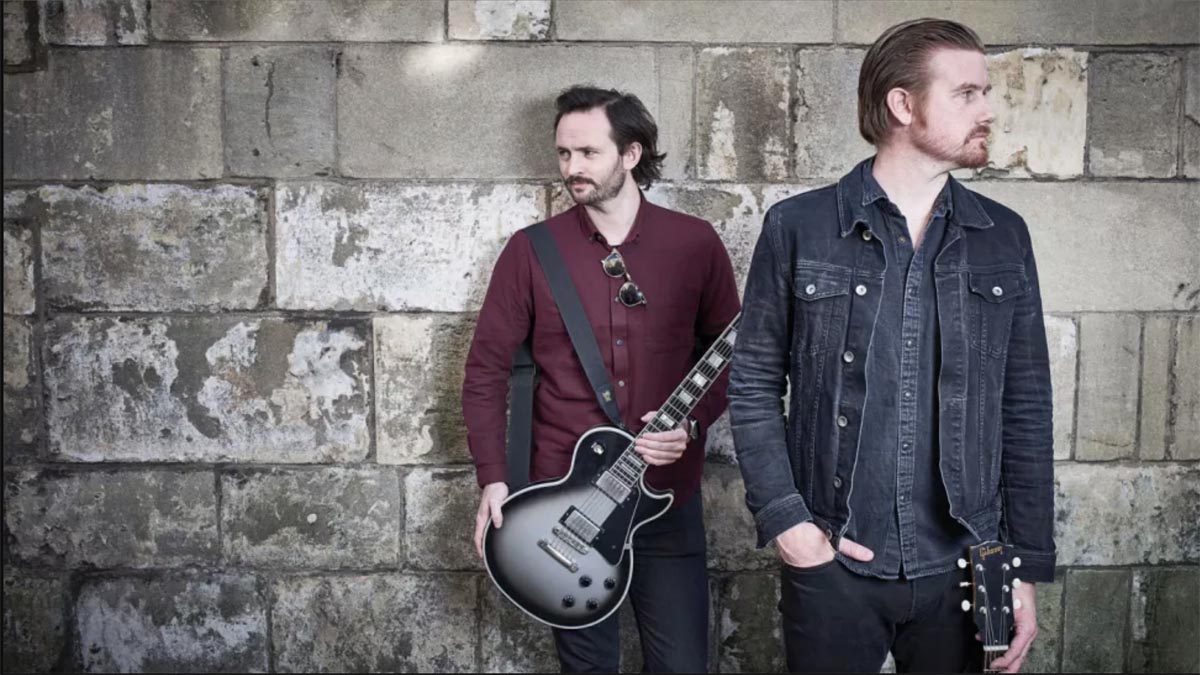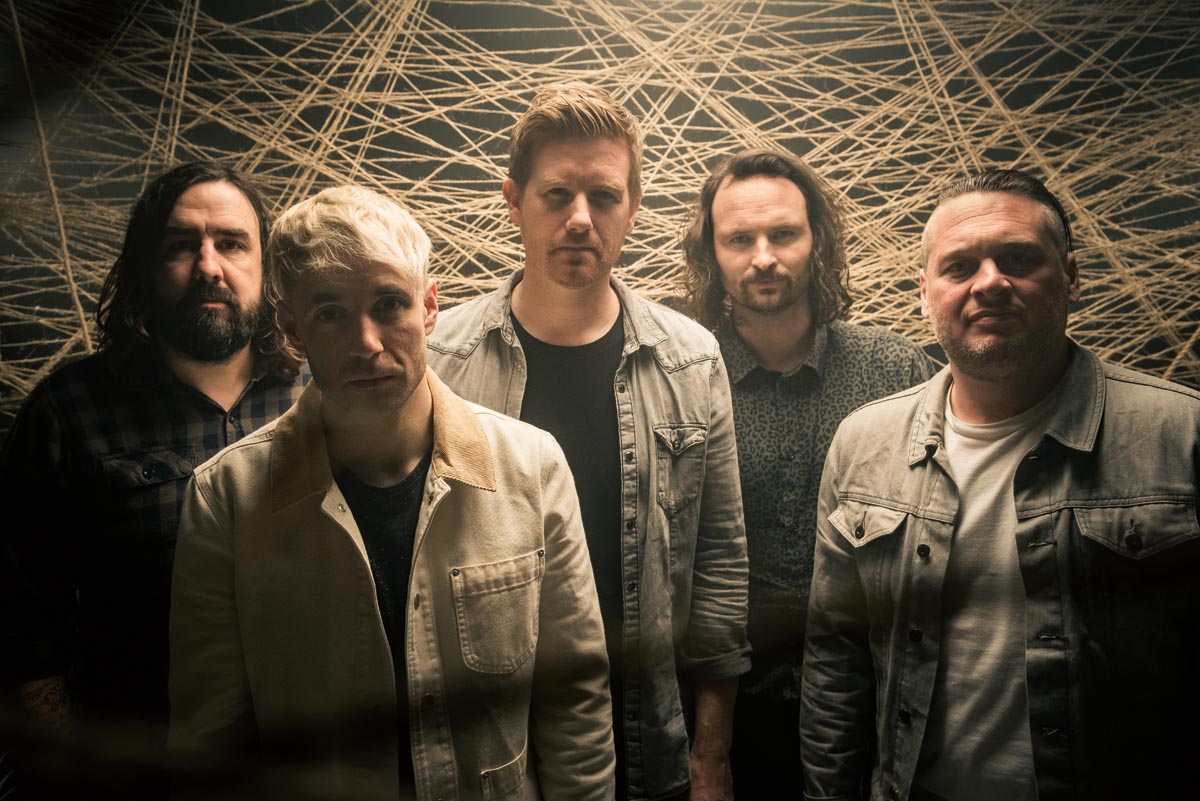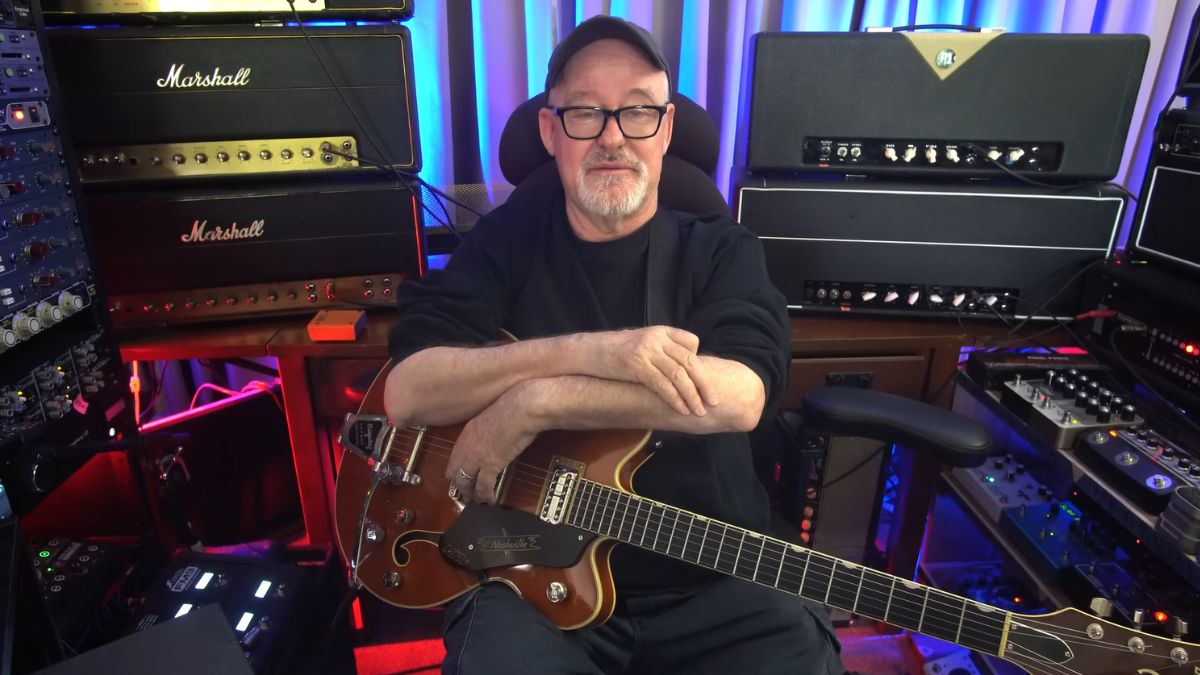Lonely the Brave: ”We don’t try to fill every space. Atmospherics are key to what we do as a band”
Guitarists Mark Trotter and Ross Smithwick talk stripping back the overdubs and maximizing the emotion on blockbuster new album The Hope List

After two albums that topped the UK rock chart and a European tour with Biffy Clyro, there would always be pressure on a new Lonely The Brave album. Then, in 2018, frontman David Jakes left the band to take care of his mental health, and band took two years to craft an album with new singer Jack Bennett.
Last year saw them making the album while two members juggled their responsibilities as frontline workers in the NHS. It would have been understandable if the resulting record sounded like a band struggling to get back on its feet.
Happily The Hope List is a massive record that justifies all the struggle it took to make, with guitarists Mark Trotter and Ross Smithwick delivering widescreen, atmospheric riffs. The band live across the country and put the record together at weekend rehearsals. Despite its long gestation period, it was recorded quickly.
I think this is the first time that we actually sound on record the way that we sound live
Mark Trotter
“I think this is the first time that we actually sound on record the way that we sound live,” says Mark Trotter. “Normally we put down ridiculous layers of guitars. This time we double-tracked the parts and that’s about it. It doesn’t feel stripped back at all but it does feel rawer. We always have an ear to be able to do this live because we’re a band. That’s the whole point. It’s not karaoke.”
It’s ironic that they made their most live-sounding album in a year where gigging was impossible, but actually the pandemic did shape the sound. The rawer sound came in part because they couldn’t return to the studio.
“There are things that we would have gone back and added to if circumstances were different. My guitar parts were done in a day. That’s all the time we had, but we were able to do that because we had spent the last two years getting to a point where we knew exactly what we wanted.”
Rawer doesn’t mean small, though. The Hope List is full of huge, reverb-soaked sounds and spacious guitar parts.
All the latest guitar news, interviews, lessons, reviews, deals and more, direct to your inbox!
Ross explains how it’s done. “I like playing chords that sound nice and then making it a little bit ugly, throwing a discordant note in there. When those open chords are played heavy, that’s what gives it this big openness. We rarely play powerchords or chuggy stuff. Then [over the top], you can play one single note and just go back to the delay and the reverb to can make it sound absolutely monstrous.”
Mark describes the writing process. “You play what sounds right. I hear in my head where that finger needs to be to get the sound I want, and I don’t know what half the chords are that we’re playing.
“There’ve been some guys online doing covers of our songs and actually they’re playing them in a much more structured and better way than I play them! It’s like ‘Oh cool, instead of doing some ridiculous 12-fret stretch I could just go there. That would be much easier!'
“It’s interesting because that you write in the moment and that’s what becomes the norm. On my side of things there’s a lot of open notes. I love drone notes. I love a constant theme, so there’s always some kind of drone and that that probably harks back to the first record when it was written as a four-piece, just trying to cover as many bases as possible.”

Both Ross and Mark reference Interpol as an influence on the single-note lines they play over the top, which they call “atmospherics”, or, as Mark jokes, “Just slam on every delay and every reverb pedal you can find, put them all on the same time and just hide behind that!” There’s a surprising secret to sounding this huge, says Mark.
“I think the biggest part of why it sounds so big is that we don’t try to fill every space. We always respect each other’s parts, respect what’s going on musically. If Ross brings in a guitar idea, generally I will then end up playing a top line which will float around it. We both love film score music and anything that can conjure up an image. It doesn’t have to be guitar-based stuff. My default is just trying to create a feeling. Atmospherics are key to what we do as a band.”
I think the biggest part of why it sounds so big is that we don’t try to fill every space
Ross finds that his Gretsch Duo Jet is perfect for delivering those lines. “I think like 80 percent of my stuff is single-note parts, so the Gretsch was all over it. It just sounds like nothing I’ve played before. I used to have one of the big hollow body Gretsches. I tried to use that live a couple of times but the feedback made it just impossible. So I sold that and got this Duo Jet. It went on every song pretty much.”
His Manson MA-2 Classic with P-90s is his first choice for chord work. “That guitar is like a perfect cross between like a Les Paul and a Tele. It’s just great for when a Les Paul’s a little bit too chunky but a Tele’s too twangy. Then we’ve got an array of Les Pauls. I’ve got a 2001 silverburst Custom which I thrash on to beef things up.”
Mark attempted to slim down his guitar arsenal for The Hope List. “When we were recording before, we just had just guitars everywhere, it was ridiculous. This time, I took five or six that were my kind of main go-tos. I’ve got a 1970 Les Paul Custom. That thing is incredible.
“I’ve also got a ’77 Tele Deluxe with a set of wide range humbuckers. It’s just got such clarity and string definition. It’s got that typical 70s Fender build quality that you could probably drive a bus between the neck pocket and the neck, but it actually plays really well and sounds great. I’ve got an absolute road weapon of a ’59 Les Paul Junior that appears quite a lot as well because it’s just the most angry, evil little guitar on the planet.
“I guess the main two guitars were the ’70 Les Paul Custom and a Fender Masterbuilt Stealth Esquire. Honestly if I had to have one guitar that would be it. With it being a Stealth Esquire, it’s got two hidden pickups that just sound incredible. People think I’m nuts when I say this but you can actually make it sound like a 50s Les Paul, because old Les Pauls have that cut, almost like a big Tele. This thing does that in spades because it is a really big Tele!”
People think I’m nuts when I say this but you can actually make the Stealth Esquire sound like a 50s Les Paul, because old Les Pauls have that cut, almost like a big Tele.
Mark Trotter
A secret weapon is Mark’s baritone Fender Jaguar: “That’s actually on most of the tracks in the record because it sits in this frequency range that isn’t taken by anything else, so it’ll fill out choruses or some of the bigger endings to songs.”
Big atmosphere requires big pedals. Mark gets his ambience from the Strymon Blue Sky and Flint and the Empress Superdelay, while Ross uses the Line 6 DL4 and an original Boss CE-2 (“I nicked that off my dad”). Live, Ross uses a Marshall JTM45 while Mark’s main amp is an old 100-watt Plexi: “It’s just savage and murders the entire front row every time you turn it past one, so that always gets used with an attenuator.”
On The Hope List, the main amps were the ones at singer Jack Bennett’s studio, a silverface Fender Twin and two Marshall-style heads built by Weinbrock amps. For dirt, Ross uses a T-Rex Dr Swamp, while Mark’s favourites are an always-on Durham Sex Drive and a Lovepedal Amp Eleven, which he sometimes boosts with a ZVex Box Of Rock or Rockbox Boiling Point.
They also experimented with digital amps. “Using Kempers for the first time was fun. I think you have to be careful though. You can disappear down the rabbit hole and not actually end up getting much done. It features across the record but it’s not the main body.”
One of the surprising things about Lonely The Brave is that a list of their influences leaves you little the wiser about how they sound. Ross mentions The Smashing Pumpkins and Sonic Youth, while Mark references R.E.M. and Jeff Buckley. In the past they’ve name-checked Deftones and Pearl Jam. The Hope List, though, sounds like Lonely The Brave.
As Mark says: “When we first started, my aspiration was to be a post-rock band with a vocalist, and then we never were anything like that. I was influenced by James Dean Bradfield’s early Manics stuff. On A Victory Line, in my head I was trying to recreate Motorcycle Emptiness, but it sounds completely different. You don’t go, ‘Right, I want to sound like Interpol.’ I can’t imagine wanting to sound like someone else, and if we’re lucky enough that we sound like ‘us’ then that’s great.”
“We all worked really hard on this album,” says Ross. “There’s been a lot of hurdles along the way, and we just really wanted to get it done.”
- Lonely the Brave's new album, The Hope List, is out now via Easy Life Record.
